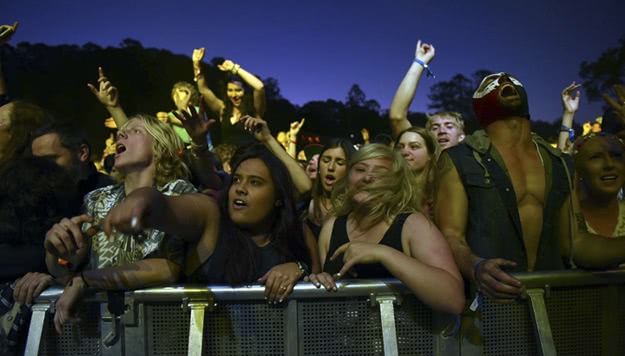New figures revealed this morning by Live Performance Australia (LPA) show that Australia’s live performance sector had a record year in 2013 as consumer confidence grew.
LPA’s annual Ticket Attendance & Revenue Survey 2013 – which covers contemporary music, music theatre, opera, comedy, classical and children’s – posted a record $1.479 billion in revenue (up 22.7% from 2012) and a record 17.9 million tickets sold constituting a 10.2% rise.
Contemporary music remains the largest sector, generating 42.5% in revenue to $628.1 million – a 30.3% rise. This was due to major tours through 2013, including Pink, Beyonce, Bon Jovi, Bruce Springsteen, One Direction, Taylor Swift, Rihanna, Ricky Martin and Justin Bieber.
In real terms, NSW lead the across-the-board live performance industry with 33.6% of revenue with a value of $497.46 million and attendance; a 32.7% share of tickets with 5.87 million sold. But per capita, Victoria and Western Australia did better. Victoria had a 32% share of revenue ($473.52 million) and 31.3% attendance (5.61 million tickets) and WA had a 13.1% share of the revenue ($194.31 million) and 12% of attendance (2.15 million tickets).
NSW and Victoria combined had a revenue of $970.98 million, or approximately two-thirds of the entire Australian live performance industry.
The reasons are that some of Australia’s largest performing arts companies are based in NSW and Victoria and as such stage the bulk of their performances in Sydney and Melbourne. Destination NSW and the Victorian Major Events Company are particularly active in the major events market and were successful in attracting major live performance events to these states.
While the national across-the-board live performance figures set new records in 2013, LPA chief executive Evelyn Richardson told the BRAG that the figures “are conservative” because the study – while widening its sources of data each year for the past ten years – does not as yet cover many regional venues, many festivals and self-ticketing events, or pubs and clubs where of course most contemporary music performances are held. “We can’t put a percentage of what the study covers, but we always qualify it by saying we know there’s more,” she said.
The 2013 figures for NSW were also higher because for the first time, the five-day Bluesfest (which draws over 100,000 and added $150.6 million to the NSW economy 2012/13) and Boomerang festivals were added to the list of music festivals whose figures are included.
Despite the overall gains the state experienced declines in terms of industry share, growth in other states outpaced that in NSW.
In terms of revenue, after NSW and Victoria were Queensland (13.5% share), WA (13.1%), South Australia (6.3%), ACT (1%), Tasmania (0.2%) and NT (0.1%).


































